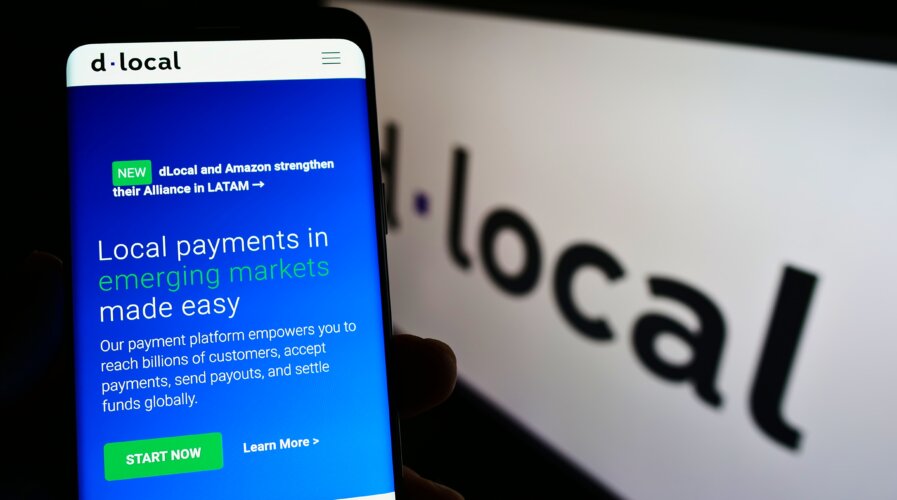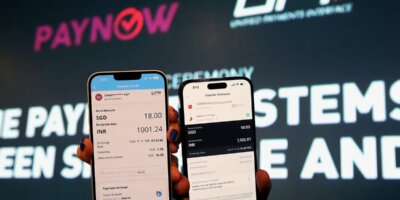
(Source – Shutterstock)
Here’s how an Uruguayan fintech unicorn is simplifying cross-border payments in Southeast Asia
When it comes to cross border payments in Southeast Asia (SEA), e-wallets are a leading trend in the region. Unlike banks and other financial service providers, cross-border payments in e-wallets are booming thanks to technology simplifying and securing the process.
It’s estimated that the number of e-wallet users in the region is expected to reach 440 million by 2025. A study from Juniper Research also found that the total value of mobile money transactions in emerging markets will reach US$2 trillion by 2027, an increase of over US$500 billion from 2023.
The boom in cross border payments by e-wallet users also creates more opportunities for businesses as well as financial service providers in offering more products and service. While there are concerns about the security of cross-border payments via e-wallets in SEA, the market shows no signs of slowing down and is only expected to grow with more digital payment features expected in the future.
To understand more about e-wallets and the state of cross-border payments in SEA, Tech Wire Asia speaks to Joaquin Moreno, Head of Asia at dLocal. The Uruguayan fintech unicorn provides cross-border payments to global merchants in emerging markets and is continuing to grow its presence in the region.
As a leader in cross-border payments activations for emerging markets, dLocal has recently begun to scale in SEA with major merchants such as Netflix and Meta now leveraging the platform in the region. As a global player, dLocal offers wide world payment coverage to over 700 local payment methods and over 400 major merchants operating in 37 countries. Beyond pay-ins and pay-outs, dLocal offers a comprehensive cross-border payments solution that enables direct issuing as well as fraud protection and marketplace solutions.
Moreno discusses dLocal’s entry into the region as well as the challenges faced in cross-border payments as well as how the fintech unicorn helps businesses deal with regulatory compliance and scalability issues.
What is the current state of SEA payments and where is it headed?
Southeast Asia’s payments scene is in its growth stage, with Indonesia being the most promising market for growth. In terms of payment methods and technologies, Southeast Asia is especially fragmented, but e-wallets remain the leading payment technology in the market.
In fact, 70% of payments in the region are made with e-wallets and the region is home to around 150 different e-wallets. Coupled with low credit card penetration in the region, they have considerable potential for growth via rail build-outs.
To cope with the increased adoption of digital payment options, the region’s banking sector is prioritizing digital transformation and is investing significantly in this to remain competitive. It’s important to note that the banking sector is mature so is well-placed to adopt better regulation at a faster pace.
Adoption of fintech has also continued to grow especially with the digital economy booming in the region; however, the rate of adoption varies from country to country since there is still a lack of proper infrastructure in many emerging markets. This means there are huge opportunities for growth in the region for nascent tech players and incumbents alike. While fragmentation in the region can bring great benefits to consumers, the challenge for fintech players is navigating this fragmented market and prioritizing localization in each market.

(Source – Shutterstock)
Why are cross-border payments becoming an increasingly competitive space between banks and fintech providers?
Fintech companies and specialist providers are rapidly gaining ground in Asia’s cross-border payment market, putting increased competitive pressure on banking incumbents and forcing them to look for new opportunities, according to a new report by global consultancy McKinsey.
Many established fintech companies are now moving beyond payments to target the entire customer wallet, providing services in the fields of trade finance, treasury, and forex exchange (FX) risk management, amongst others. These products and services are offered through integrated platforms, which also include a range of value-adds such as checkout lending, merchant-of-record services, as well as API integration for connection with third-party services like SME accounting software.
Regulatory compliance and scaling to meet each market’s needs is one of the biggest challenges. This is where dLocal’s strength against the competition is its ability to move a lot faster. Our “dlocal Platforms” is a new solution designed for any platform business model operating in emerging markets. It aims to speed up and make it easier to accept payments and make payouts to sub-accounts all within the same platform.
With cross-border payments being simplified, have the risks increased as well? What about issues like money laundering? Will these increase now due to the simplicity of cross-border payments?

Joaquin Moreno, Head of Asia at dLocal
The amount of fraudulent traffic merchants seen in emerging markets is simply higher. In the US, for example, the total fraudulent traffic an apparel merchant might encounter would be less than 1% in total, whereas in Brazil or Indonesia, it would be over 4%. Fraudulent traffic is simply higher in these emerging markets and therefore that is something merchants will need to contend with on a day-to-day basis. What might be surprising, however, is that fraudsters do not necessarily act any differently in emerging markets. Globally, fraudsters are astute and often use the same tricks of the trade regardless of the market.
The ecosystem is aware that emerging markets with less sophisticated infrastructure are generally deemed riskier, and on top of that, there is the specific challenge of many new users that merchants have never seen before. In these markets, new users are entering the digital economy en masse. For example, in SEA, Google reported 40 million new users came online in 2020 alone. So of course these new users don’t have a digital fingerprint, they don’t have a built reputation with your brand.
The perceived risk of these markets combined with the lack of data or familiarity around user profiles has a huge impact. The whole payments ecosystem generally treats transactions in these markets and from these users more conservatively (in other words they are more risk averse in these scenarios) and the decline rates are far higher as a result. This can be incredibly frustrating for merchants who are entering these markets and investing heavily in customer acquisition, and essentially there is a leaky funnel where these users (including legitimate ones) are being declined at a much higher rate.
It’s also no secret that credit card penetration is generally a lot lower than in mature markets. In fact, in markets such as Vietnam and Indonesia credit card penetration is as low as 5%. So the preferred method of transacting online is often via e-wallets or Alternative Payment Methods. To put it simply, fraudsters in these markets have even more options to get their criminal activity through.
We see fraudsters trying to exploit e-wallets mainly in two ways:
- Fake Account Registration: Fraudsters are able to manipulate their identities and continue to sign up for fake accounts with eWallets and go on to transact on a merchant’s site.
- Account Takeover: where a legitimate customer’s e-wallet account is taken over by a fraudster and the fraudster exploits the good historical reputation of that user to transact fraudulently, either by stealing account balances or points or loading stolen payment instruments into the wallet.
In both scenarios, it is very difficult for a merchant without a proper fraud prevention solution to detect this kind of layering, when the fraud is actually happening at the wallet account level.

(Source – Shutterstock)
What is a localized payment structure and why should companies look to it? Any examples of this you can share?
Less than 20% of emerging market consumers have access to international credit cards. The only way to scale in these markets is to develop a deep understanding of the trends and behaviors of consumers in the different regions. Only then would you be able to learn their spending behaviors and preferred modes of payment. Without first taking the time to know your market, you risk missing out on engaging with 80% of the population.
We strongly believe that a localized payment strategy is fundamental to the success of a rapid and successful expansion. Something which I have seen working in dLocal is that the payment culture varies a lot depending on the market. It is inconceivable for companies to go into Brazil and not offer PIX for example, which is an instantaneous payment method created just a couple of years ago, with more than 80% of the market now relying on it to pay.
The same goes for India with UPI, Mobile Money/MPesa in Africa, or e-wallets in Asia. In Indonesia, for example, each person has an average of 3.16 e-wallets. Understanding customers’ payment preferences and offering local payment methods creates an optimal checkout experience that increases sales.
How has dLocal fared in Southeast Asia since its debut in the region? Can you share with us some success stories with customers?
Since our first foray into Southeast Asia, we’ve managed to diversify our offered payment methods across key markets.
With Wikimedia, of dLocal’s Payments Rally 2021, Pats Pena explains “India for example, only offering one payment method was not enough to get everyone covered. UPI was our most used payment option at that time with a 40% share of wallets. This, in itself, was large, larger than the current market standard, but it was still not enough. Options like Paytm, local credit cards, and digital banking made up around 25% – 50% of the share of wallet, and those were important players for us to have as well.”
Why is dLocal investing in SEA’s payment ecosystem via a merchant-led strategy?
dLocal is focused on improving the infrastructure for financial services in emerging markets, including Southeast Asia. While other players in this space focus on the product side of the business, we are more merchant-driven as we believe this is the best way to cross-sell. By taking leading merchants to market, dLocal can then help them build a route to market while engaging the wider market (including other developing sectors).
Lastly, with the cross-border and payments market becoming increasingly competitive, how does dLocal plan to deal with the competition?
More than selling products, dLocal sells access. We believe we move a lot faster than most cross-border payment services out there and are therefore the go-to brand for cross-border payments solutions in the region. We’re also known as a global brand that can activate entries into emerging markets across the globe no matter where they seek to penetrate.
READ MORE
- 3 Steps to Successfully Automate Copilot for Microsoft 365 Implementation
- Trustworthy AI – the Promise of Enterprise-Friendly Generative Machine Learning with Dell and NVIDIA
- Strategies for Democratizing GenAI
- The criticality of endpoint management in cybersecurity and operations
- Ethical AI: The renewed importance of safeguarding data and customer privacy in Generative AI applications


